View this email on our site
Subscribe to this newsletter
Please consider distributing this newsletter to others.
Dawn H. Gouge1, Shujuan (Lucy) Li1, Christopher Bibbs2, and Shaku Nair1
1University of Arizona; 2Salt Lake City Mosquito Abatement District
Scorpions are predatory arachnids related to spiders, mites, and ticks. They are some of the oldest known terrestrial arthropods (animals with an external skeleton, a segmented body, and paired jointed limbs). Scorpions have an elongated body and a segmented tail that ends in a stinger that can deliver a venomous sting. They have four pairs of legs and pedipalps with plier-like pincers on the end, used for grasping (Figure 1).
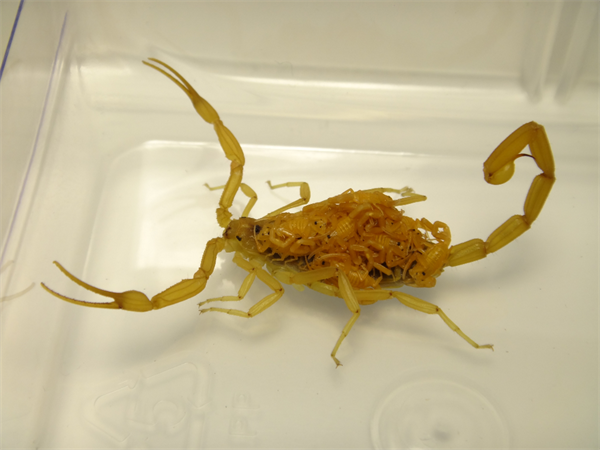
Figure 1. Arizona bark scorpion with babies. Photo: David S. Flores.
There are close to 2,000 described species of scorpions worldwide, at least 100 in the U.S., and more than 50 species in the Desert Southwestern states. Scorpions have long been of concern and interest to humans primarily due to their ability to give painful, distressing, and sometimes life-threatening stings, but also because they are important and beneficial components of our ecosystems.
Our Most Dangerous Species is the Arizona Bark Scorpion Centruroides sculpturatus
The Arizona bark scorpion is typically associated with “crevice” harborage during daylight hours. They tuck themselves into walls, under rocks, logs, tree bark, and other surface objects. They may also be found in small animal burrows and other protected places, including inside building wall voids. They are most active after dark when they prey on smaller arthropods including nuisance insects like crickets and cockroaches (Figure 2). The Arizona bark scorpion is common around buildings of all kinds in the low desert regions of the Desert Southwest and is native to the Sonoran Desert. In towns and cities, they can sometimes be found in dense populations associated with homes, irrigated landscapes, and hollow block perimeter walls. They can be found having fallen into swimming pools and will enter homes, often gaining access under doorways and via weep holes in walls.
Bark scorpion adults measure between 2 to 3 inches in length and live for 5-7 years and are often found in larger numbers around buildings than the natural desert in which water can be a limiting resource.
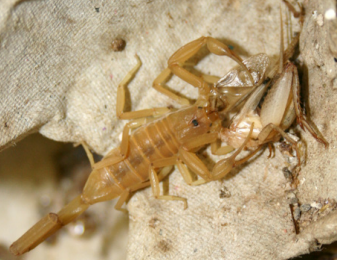
Figure 2. Arizona bark scorpion feeding on a cricket. Photo: Melissa Sikes.
Arizona bark scorpions are not territorial and usually found living in groups. Around buildings, they usually go undetected unless they gain access to the interior of buildings. They can be excluded to a large extent, so make sure to replace worn door sweeps that have gaps through which they can enter (Figure 3), and consider caulking around interior electrical faceplates and pipe escutcheon plates to prevent them entering the interior of the home from wall voids.
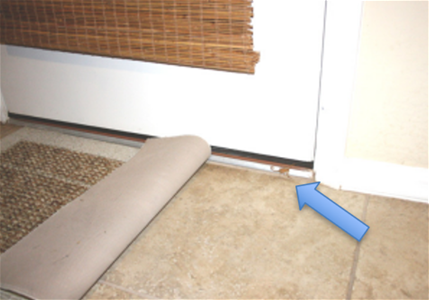

Figure 3 (top). Arizona bark scorpion entering through gap under a door. Once inside a wall void bark scorpions can enter a home interior in many ways (bottom). Photos: Chloe Fung.
Arizona bark scorpions are proficient climbers, and will make their way across interior flooring, scale walls and traverse across ceilings. Scorpions may fall from ceilings, landing in beds, sinks (Figure 4), bathtubs, toilet bowls, etc. If you find a scorpion in a pool or spa, do not assume it is dead or unable to sting. They can remain alive entirely submerged for surprising amounts of time in chlorinated pool water and recover well enough to defend themselves if fished out by hand.
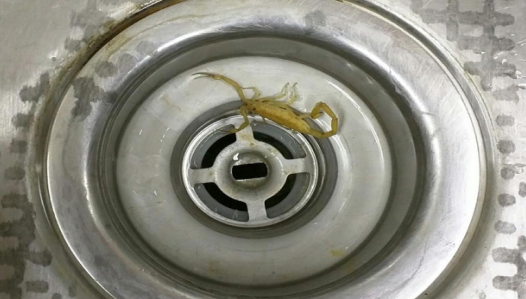
Figure 4. Arizona bark scorpions may fall from walls and ceilings and get caught in sinks and bathtubs from which they cannot escape. Photo: Dawn H. Gouge.
Arizona bark scorpions are active for most of the year in low desert areas, when nighttime temperatures are above 70° F. During the coolest months (November-March) they are less active, and during the coldest periods they cluster as groups in weather protected, enclosed, and undisturbed spaces called “hibernacula”. Groups may be found when residents undertake construction work during the winter months and block walls are removed, or building walls are opened up during remodeling efforts (Figure 5).
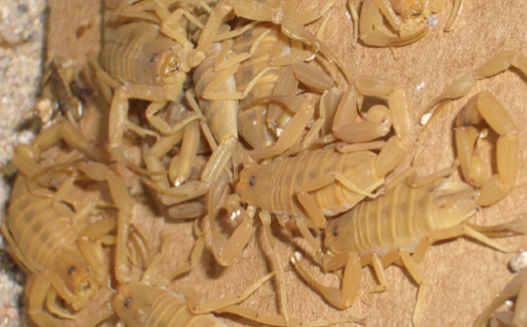
Figure 5. Bark scorpions aggregate in groups to over-winter in protected spaces.
Photo: Dawn H. Gouge.
In research studies investigating the harborage preferences of Arizona bark scorpions, 95% of the scorpions preferred hollow block walls as refuge places compared with the many other options around buildings and landscapes. Vegetation (including tree bark and pinecones), ground cover, and underground burrows are also used as harborage by the scorpions, but hollow block walls are preferred.
The Sting
All scorpions will sting to defend themselves, and the majority of sting incidents occur when a scorpion is accidentally grabbed, crushed against the body, or trodden on. The Arizona bark scorpion is the only scorpion species of medical significance in the United States. Stings are rarely fatal or leave people with long-term injuries. However, medical treatment for infants, children, adults with hypertension, and those in extreme pain should be sought immediately.
Infants crying inconsolably may have been stung by a scorpion. Symptoms in young children include screaming, crying, holding a stung hand or foot, twitching muscles, flailing limbs and erratic eye movement.
Scorpion stings are painful and can be deadly for small children in the absence of medical support.
If children 9 years or under or weighing less than 70lb (32 Kg) are stung, call 911 or the Poison Help Hotline 1 (800) 222-1222, or take them to the nearest hospital for treatment immediately.
Older, larger children may need pain management to cope with discomfort.
Symptoms can include severe pain, loss of muscle control, roving or abnormal eye movements, slurred speech, respiratory distress, excessive salivation, frothing at the mouth, airway obstruction, and vomiting.
Most healthy adults can manage a sting without seeking the help of a doctor, but it is always advisable to call the Poison Help Hotline 1 (800) 222-1222 for advice, as everyone has a unique response.
Living With and Managing Scorpions
In the Desert Southwest, we share our space with these fascinating creatures, and our homes often provide a an environment rich in food, water, and shelter resources. To completely eliminate scorpions from our landscapes would require extreme and impractical measures. A sustainable approach is to accept that scorpions are part of the natural landscape and take precautions to exclude the creatures from the interior of homes and buildings. Rarely, locations can support very high populations and in these instances working with a pest management professional to reduce exterior populations may be advisable.
The following are useful tips for the safe and harmonious sharing of our incredible desert landscape.

Figure 6. Arizona bark scorpion glowing under UV light. Photo: Alan Rockefeller.
Scorpions are extremely difficult to eradicate. If you regularly find scorpions inside your home, call a pest management professional experienced in pest-proofing buildings and the management of scorpions. Eliminating their food sources (crickets and other insects) can help but will not eliminate scorpions from around a home. If a reduced scorpion population is desirable, additional steps can be taken. However, scorpions are difficult to manage with pesticides alone. Pest-proofing your home or structure is by far the most effective way to reduce scorpion contact and potential scorpion stings.
Read more about different species of scorpions, their biology, behavior and management in our publication linked here:
https://extension.arizona.edu/sites/extension.arizona.edu/files/pubs/az1768-2018.pdf
For more information on school IPM read: https://www.epa.gov/schools.
During a wildfire, embers cause most home ignitions. Residents can harden homes minimizing property damage and protecting firefighters. Help reduce putting firefighters and communities at risk by hardening your home to ember intrusion and creating defensible space on private property.
The National Interagency Fire Center (NIFC) often uses May as a focal point for raising awareness and promoting wildfire preparedness. Every year, on average, human-caused wildfires account for approximately 85% of wildfires in the United States. Though most of these fires are caused by accidents, many of them can be prevented. Educate yourself on how you can prevent wildfires and mitigate the impacts of wildfires on your community.
Wildfires threaten people, homes, and precious natural resources. Firefighters risk their lives to protect our communities and suppress these preventable incidents. In an effort to prevent damaging human-caused wildfires, the BLM partnered with Maverik, "Adventure’s First Stop", a convenience store brand operating 382 locations across 12 western states, to educate the public about how they can avoid starting these incidents. The partnership provides simple, effective education tools for public lands users, which they’ll see right before departing for their next public lands adventure at Maverik stores. The videos (in the right navigation) play on gas pumps and monitors inside Maverik locations encouraging everyone to recreate safely and responsibly. Spark Safety, Not Wildfires!
Check out on-line resources to learn about wildfire prevention in your area. Here are just a few:

Wildfire burning in the Kaibab National Forest, Arizona. Photo: Mike McMillan, USFS.
What the Heck Was This? (From our April issue)
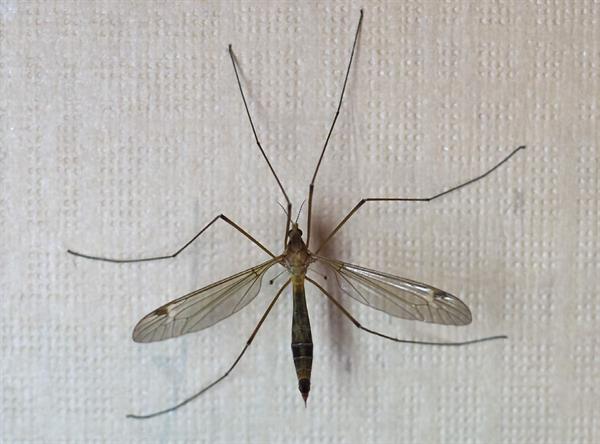
Answer: Crane Fly.
Congratulations to Master Pest Detectives
Diane Dance and
Anne Stahley, Water Conservation Specialist - Glendale Water Services Department.
What the Heck is This?
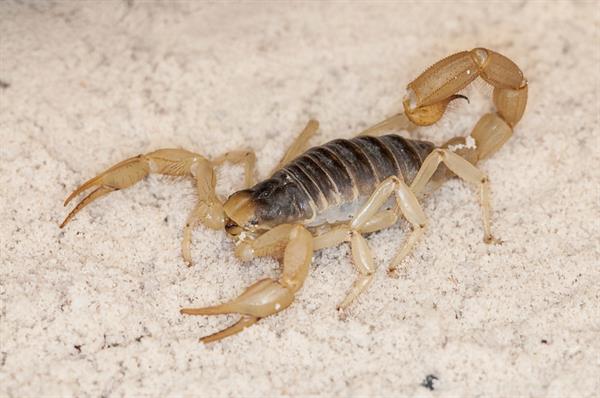
If you know the answer, email Dawn at dhgouge@arizona.edu. You will not win anything if you are correct, but you will be listed as a “Master Pest Detective” in the next newsletter issue.
8th Arizona School IPM Conference ONLINE is available for two more weeks!
Online April 29 – May 31, 2025
The Arizona School IPM Conference is a great opportunity for continuing education for all institutional staff engaged in operations, maintenance, turf and landscape, food service, health services and more, in schools, childcare, community colleges, public health, medical facilities, city parks and rec, turf and landscape and many other areas.
Email nairs@arizona.edu if you have questions.
What’s Bugging You? First Friday Events (New York State IPM Program)
Fridays | 12:00 pm. – 12:30 p.m. EDT | Zoom | Free but registration required.
In this monthly virtual series, we explore timely topics to help you use integrated pest management (IPM) to avoid pest problems and promote a healthy environment where you live, work, learn and play. What is IPM? It's a wholistic approach that uses different tools and practices to not only reduce pest problems, but to also address the reasons why pests are there in the first place. Each month, our speakers will share practical information about how you can use IPM. Register for upcoming events.
What’s Bugging You First Friday events are also available in Spanish. Individuals interested in these events can find more information on this website: https://cals.cornell.edu/new-york-state-integrated-pest-management/outreach-education/events/whats-bugging-you-webinars/conozca-su-plaga
Urban and Community IPM Webinars (Host: University of California)
UC Statewide IPM Program Urban and Community webinar series is held the third Thursday of every month to teach about pest identification, prevention and management around the home and garden. This series is free but advanced registration is required. Dates and topics below, all begin at noon Pacific. https://ucanr.edu/sites/ucipm-community-webinars/
The first Pest Defense webinar of the year will take place on Friday, May 16th at 1:00 p.m. CDT featuring guest speakers Sarah Kroening, program manager for the environmental health initiative at Children’s Health Alliance of Wisconsin, and Carissa Hoium, program leader for the environmental health initiative at Children’s Health Alliance of Wisconsin.
Asthma is one of the most common chronic diseases of childhood. Creating healthy, asthma-friendly school environments benefits both the students and staff, and IPM plays a major role! During this presentation, Kroening and Hoium will review some asthma basics, take a closer look at asthma in Wisconsin and outline how the state is addressing the burden of asthma. Our speakers will then take a deeper dive into their school walkthrough program and Love My Air Wisconsin program and explore their ties to IPM. Register for this free webinar here!
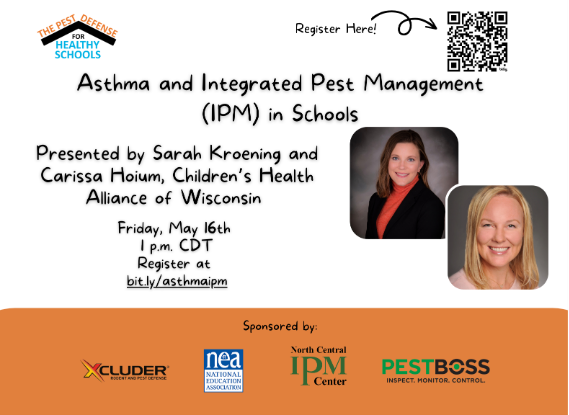
To view previous University of Arizona newsletters, visit: https://acis.cals.arizona.edu/community-ipm/home-and-school-ipm-newsletters.
https://uarizona.co1.qualtrics.com/jfe/form/SV_cMhZ82JodDKJgCa
Acknowledgements
This material is in part funded by the National Institute of Food and Agriculture, U.S. Department of Agriculture, under award number 2021-70006-35385 that provides Extension IPM funding to the University of Arizona. Any opinions, findings, conclusions, or recommendations expressed in this publication are those of the authors and do not necessarily reflect the views of the U.S. Department of Agriculture or those of other funders.
We respectfully acknowledge the University of Arizona is on the land and territories of Indigenous peoples. Today, Arizona is home to 22 federally recognized tribes, with Tucson being home to the O’odham and the Yaqui. Committed to diversity and inclusion, the University strives to build sustainable relationships with sovereign Native Nations and Indigenous communities through education offerings, partnerships, and community service.